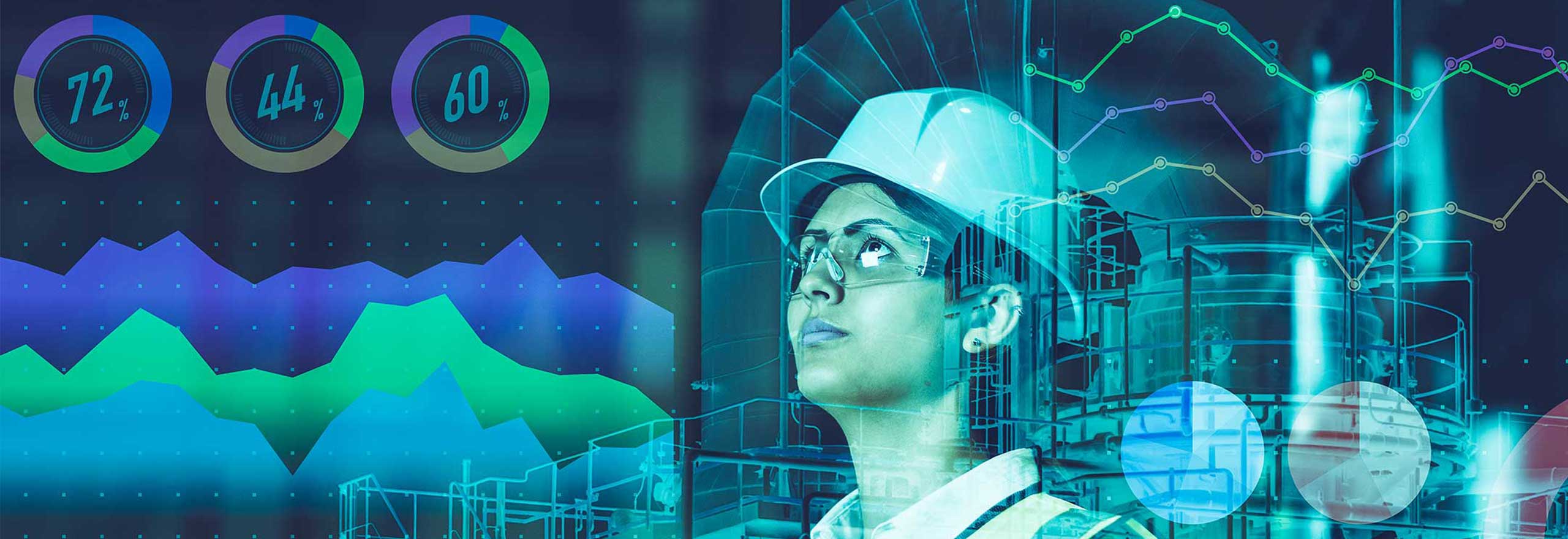Digital Twins for Industrial Facilities
Hexagon's digital twin solutions enable virtual models of physical assets, systems and/or processes, transforming industrial operations. These models simulate, monitor and analyse real-world performance in real time. Hexagon exceeds traditional digital twins with innovative, data-driven solutions that optimise data use throughout the industrial asset lifecycle.
Ready to get started?
Understanding Digital Twins
In today's industrial landscape, EPCs and owner operators contend with a myriad of challenges, from tight deadlines to budget constraints, necessitating efficient delivery. As projects scale up, so do their intricacies, underscoring the need for streamlined workflows to minimise downtime and optimise resource utilisation.
While they undoubtedly offer insights and aid data management, the question has lingered: are digital twins sufficient? Hexagon has answered it with digital, data-driven solutions that seamlessly integrate, enriching your operations globally.
Read on (below) as we dive deeper into the realm of digital twins and unveil their transformative impact on industrial projects.

The Power of Digital Twins

Digital twins are revolutionary tools reshaping how organisations navigate complexities and optimise performance. These virtual replicas of physical assets enable more informed decision-making, amplify efficiency and drive superior outcomes within virtual environments. They embody dynamic solutions, delivering real-time insights, predictive capabilities and optimisation opportunities, emboldening organisations to achieve project and operational excellence.
Types of Digital Twins
Digital twins offer a diverse range of solutions, each tailored to meet specific needs within different stages of the industrial facility lifecycle:
- Operational Twin: Focused on replicating and optimizing the operation and maintenance of existing assets, offering real-time insights into performance and enabling predictive maintenance.
- Construction Twin: Used during the construction phase, it enables stakeholders to visualize and simulate construction processes, streamline workflows and proactively identify potential issues (often involving the creation of 3D models transferred to the asset owner).
- Asset Twin: Replicates individual physical assets, such as equipment and machinery.
- Process Twin: Simulates and enhances specific industrial processes (e.g., manufacturing and production).
- Supply Chain Twin: Models and analyzes supply chain networks.
- Environmental Twin: Duplicates and predicts environmental conditions and impacts.
How Do Digital Twins Benefit Industrial Facilities?
Digital twins revolutionise operational strategies and foster innovation by reflecting the current state of physical assets, processes and/or systems. By harnessing data streams and advanced analytics, they empower stakeholders with timely insights for proactive decision-making and precise operational optimisation. Digital twins also promote collaboration, streamline operations, enhance productivity and deliver tangible gains in cost savings, resource utilisation and overall competitiveness.
Challenges of Building Digital Twins
Despite their numerous benefits, building and implementing digital twins also presents distinct challenges. Ensuring coherence and context across diverse datasets is crucial to unlocking their full potential. Robust data integration strategies and technologies are essential for harmonizing data streams, while advanced modeling techniques and domain expertise are needed to capture the intricate nuances of physical assets and processes. Successfully integrating digital twins into existing workflows and cultures requires strategic leadership, stakeholder engagement and training programs (to drive adoption).
The Asset Handover
Digital twins play a crucial role in facilitating the handover process between EPCs and owner operators. This ensures continuity and efficiency by transferring information and operational insights from the construction to operational phase. They also empower owner operators by enabling the transfer of knowledge and expertise from contractors.

Enabling Technologies
Advanced technologies enhance digital twins by driving efficiency and fostering data-driven decision-making. IoT sensors provide real-time data for comprehensive insights, while artificial intelligence/machine learning optimises operational processes. Cloud infrastructure enhances support by facilitating seamless collaboration and enabling real-time analytics.
Hexagon's digital backbone simplifies your Smart Digital Reality™, automating asset handover and converting data into actionable insights. According to our research, these advancements have contributed to improvements of up to 10% in maintenance efficiency and 30% in operational efficiency, while reducing cost overruns by 20% and inventory and documentation efforts by an impressive 70%!












